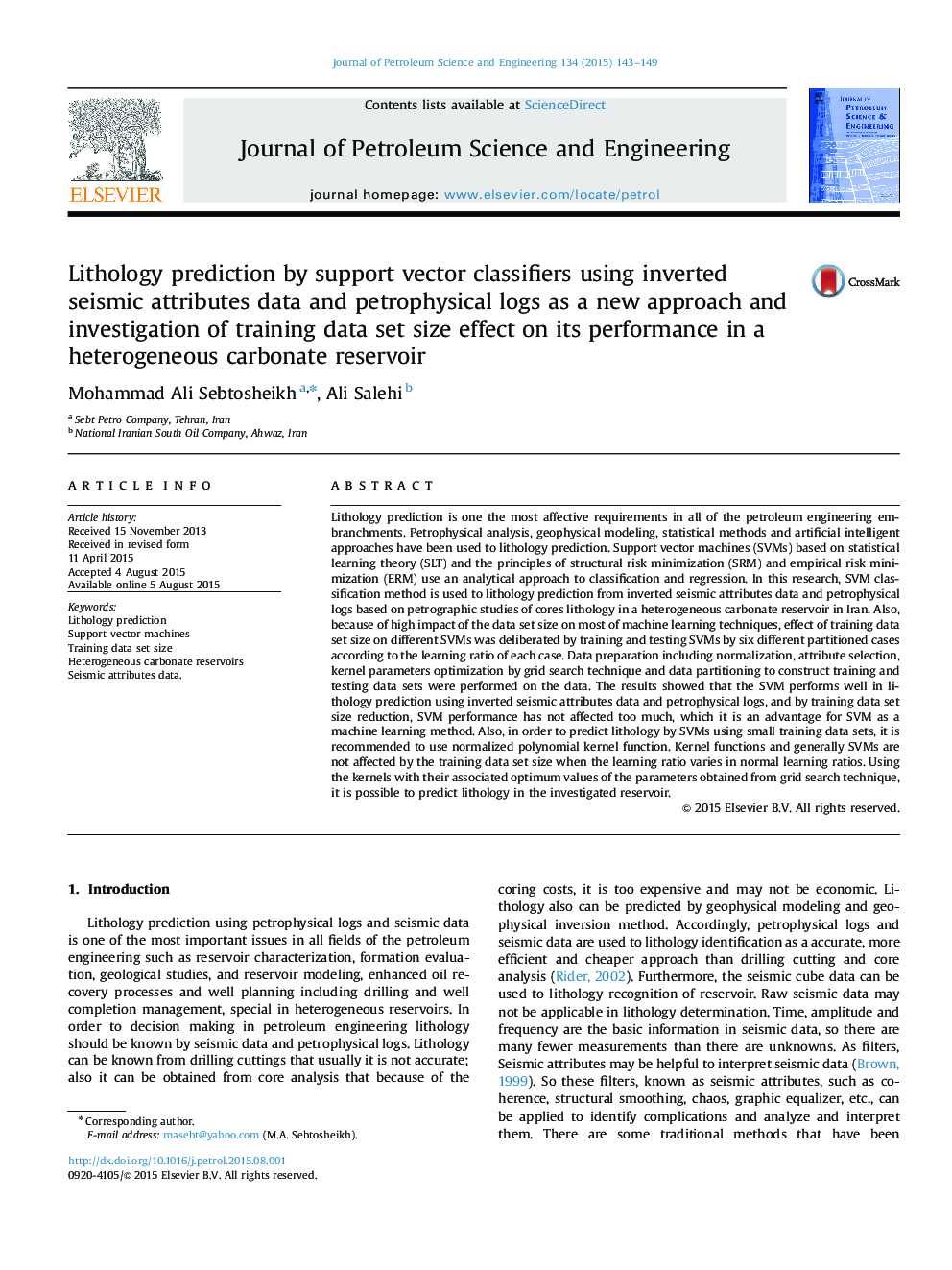| کد مقاله | کد نشریه | سال انتشار | مقاله انگلیسی | نسخه تمام متن |
|---|---|---|---|---|
| 1754674 | 1522807 | 2015 | 7 صفحه PDF | دانلود رایگان |
• We examine training data set size effect on support vector machines inverted seismic attributes and petrophysical logs data to lithology prediction.
• The SVM performs well in lithology prediction.
• Optimum values of the kernel function parameters obtained from grid search technique.
• As an advantage, by training set size reduction, SVM performance has not changed too much.
• To predict lithology using small training sets, normalized polynomial kernel performs better.
Lithology prediction is one the most affective requirements in all of the petroleum engineering embranchments. Petrophysical analysis, geophysical modeling, statistical methods and artificial intelligent approaches have been used to lithology prediction. Support vector machines (SVMs) based on statistical learning theory (SLT) and the principles of structural risk minimization (SRM) and empirical risk minimization (ERM) use an analytical approach to classification and regression. In this research, SVM classification method is used to lithology prediction from inverted seismic attributes data and petrophysical logs based on petrographic studies of cores lithology in a heterogeneous carbonate reservoir in Iran. Also, because of high impact of the data set size on most of machine learning techniques, effect of training data set size on different SVMs was deliberated by training and testing SVMs by six different partitioned cases according to the learning ratio of each case. Data preparation including normalization, attribute selection, kernel parameters optimization by grid search technique and data partitioning to construct training and testing data sets were performed on the data. The results showed that the SVM performs well in lithology prediction using inverted seismic attributes data and petrophysical logs, and by training data set size reduction, SVM performance has not affected too much, which it is an advantage for SVM as a machine learning method. Also, in order to predict lithology by SVMs using small training data sets, it is recommended to use normalized polynomial kernel function. Kernel functions and generally SVMs are not affected by the training data set size when the learning ratio varies in normal learning ratios. Using the kernels with their associated optimum values of the parameters obtained from grid search technique, it is possible to predict lithology in the investigated reservoir.
Journal: Journal of Petroleum Science and Engineering - Volume 134, October 2015, Pages 143–149
